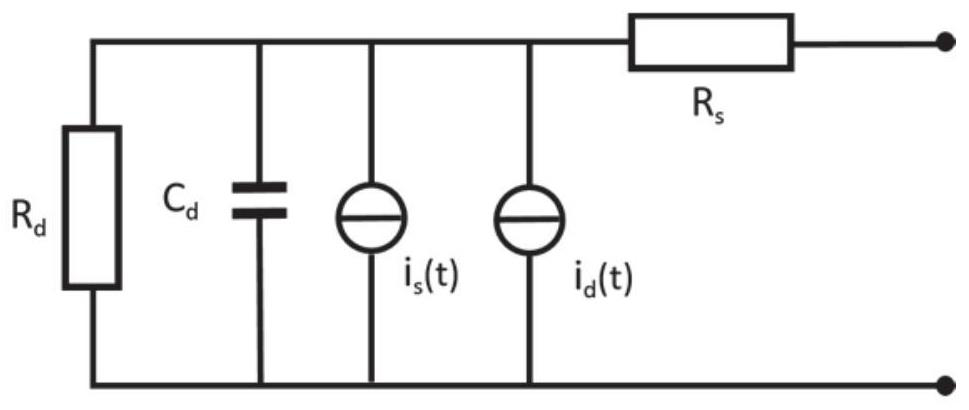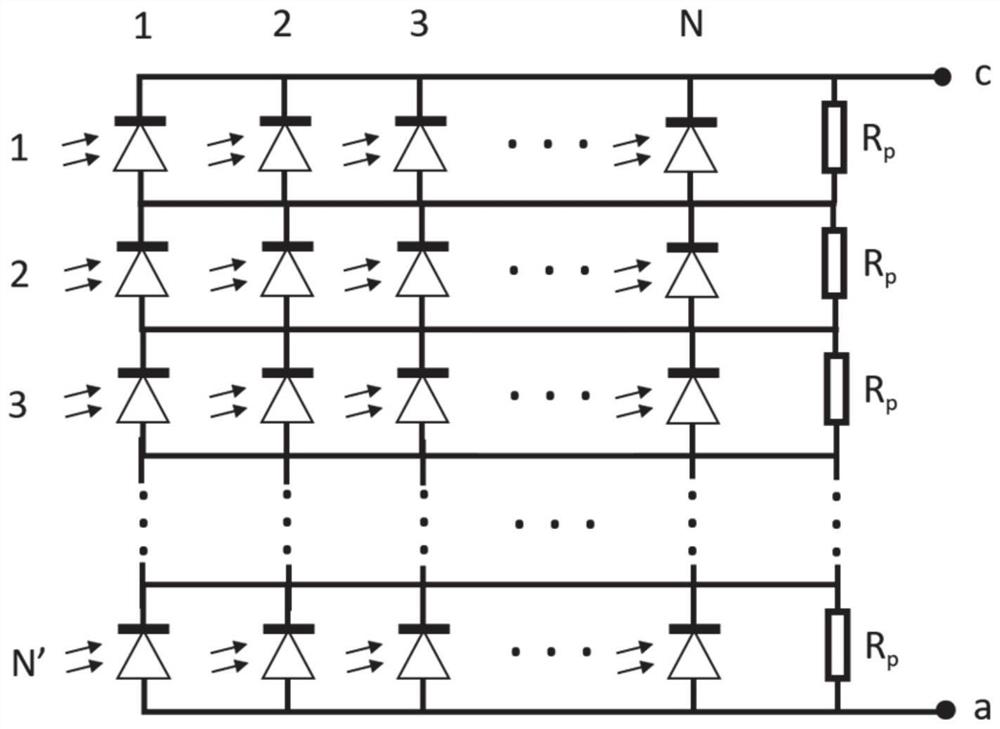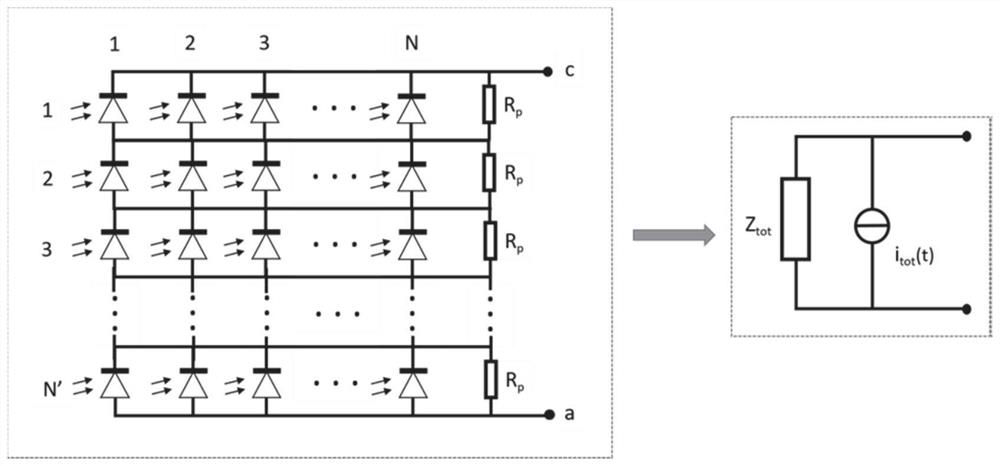Photoelectric detector device, design method and wireless optical communication system
A technology of photodetector and design method, which is applied in the field of optical communication, can solve the problems of increasing system noise, increasing system complexity and cost, reducing joint bandwidth, etc., to improve receiving performance, increase effective light-receiving area, increase The effect of the receiving aperture
- Summary
- Abstract
- Description
- Claims
- Application Information
AI Technical Summary
Problems solved by technology
Method used
Image
Examples
Embodiment 1
[0035] A design method of a photodetector device. The photodetector device includes a photodiode matrix and several cascaded resistors. N photodiodes are connected in parallel to form a 1×N parallel PD (photodiode) matrix, and then a cascaded resistor is connected in parallel. resistance;
[0036] The parallel PD matrix after N' parallel cascaded resistors is connected in series;
[0037] Both ends of the cascaded resistors connected in series are output terminals for outputting one electrical signal.
[0038] Through the above design, the light-receiving area can be effectively increased, and the light-receiving performance can be improved.
[0039] The output of the photodiode matrix is used to interface with the amplification circuit.
[0040] The number N' of the cascaded resistors is not less than the total column number N of the parallel PD matrix, and the resistance value of the cascaded resistors satisfies the bandwidth compensation condition, and the bandwidth com...
Embodiment 2
[0050] A photodetector device, including a photodiode matrix and several cascaded resistors, the photodiode matrix includes N×N′ photodiodes, N photodiodes are connected in parallel to form a 1×N parallel PD matrix, and then a parallel connection The cascaded resistors are connected in series with the parallel PD matrices after N′ parallel cascaded resistors, and the two ends of the series connected cascaded resistors are output terminals for outputting one electrical signal.
[0051] The device can effectively increase the light-receiving area and improve the light-receiving performance.
[0052] Further, the number N' of the cascaded resistors is not less than the total number N of columns of the parallel PD matrix, and the resistance value of the cascaded resistors meets the bandwidth compensation condition.
[0053] When the device satisfies the above conditions, the effective light-receiving area is increased without reducing the bandwidth, and the light-receiving performan...
Embodiment 3
[0087] In this embodiment, a 2×2 photodiode matrix is designed, which is composed of two 1×2 photodiode matrices, as shown in the attached Figure 5 shown. Each photodiode has an effective area diameter of 100um and supports 2.5Gbit / s. It can be interconnected by wire bonding and packaged in a thin TO-46 can, which can be flexibly used at the receiving end of the wireless optical system, increasing the effective receiving area without changing the bandwidth, and enhancing the performance of the receiving end of the system. At this time, compared with a single receiving PD, the effective light-receiving area increases by 4 times, the output current increases by 2 times, and the bandwidth remains basically unchanged. In addition, the entire matrix still maintains one signal output in the end. The PD matrix generally used in laser communication in the prior art finally outputs multiple signals. For example, if the matrix includes 8 PDs, 8 signals are transmitted respectively. ...
PUM
 Login to View More
Login to View More Abstract
Description
Claims
Application Information
 Login to View More
Login to View More - R&D
- Intellectual Property
- Life Sciences
- Materials
- Tech Scout
- Unparalleled Data Quality
- Higher Quality Content
- 60% Fewer Hallucinations
Browse by: Latest US Patents, China's latest patents, Technical Efficacy Thesaurus, Application Domain, Technology Topic, Popular Technical Reports.
© 2025 PatSnap. All rights reserved.Legal|Privacy policy|Modern Slavery Act Transparency Statement|Sitemap|About US| Contact US: help@patsnap.com



